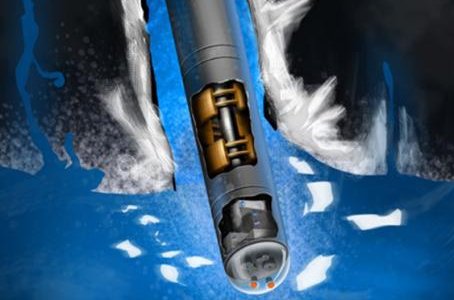An artists rendering of the tunnelbot, which scientists say could be used to explore the oceans of Europa -- assuming NASA can find a way to get it there. Photo by Alexander Pawlusik/LERCIP Internship Program/NASA Glenn Research Center
Dec. 16 (UPI) -- NASA wants to explore Europa's ocean, but the Jovian moon's underwater world is protected by a thick layer of ice. To pierce through the icy crust, one group of scientists wants to use a nuclear-powered "tunnelbot."
Europa's subsurface ocean is one of the top targets in the search for alien life. Researchers think the ocean boasts the ingredients necessary to support microbial communities. But the only way to know for sure is to go there.
But even if NASA can safely deliver a probe to the surface of Jupiter's icy moon, they'd need a spacecraft capable of burrowing through miles of ice.
As part of a concept study, scientists and engineers with NASA's Glenn Research COMPASS team dreamed up a solution to the problem. They presented their idea at a recent American Geophysical Union meeting.
"We didn't worry about how our tunnelbot would make it to Europa or get deployed into the ice," Andrew Dombard, associate professor of earth and environmental sciences at the University of Illinois at Chicago, said in a news release. "We just assumed it could get there and we focused on how it would work during descent to the ocean."
Nuclear power would help melt the ice, allowing tunnelbot to burrow through Europa's crust. Fiber optic cables would also the probe to communicate with a base on the surface. Photo by Alexander Pawlusik/LERCIP Internship Program/NASA Glenn Research Center
Researchers conceived two versions of the probe, one powered by a small nuclear reactor and another fueled by General Purpose Heat Source bricks, radioactive heat source modules tailored for space missions. Heat from both energy sources would assist in melting the ice.
The probe developed by Dombard and his colleagues would be able to tunnel through Europa's ice -- which has a thickness ranging from 1.2 to 18.6 miles -- and carry instruments designed to test the subsurface ocean for evidence of microbial life. Along the way, the tunnelbot could sample and study the ice itself, as well as lakes found within the icy layers. Fiber optic cables would allow the probe to communicate with crafts on the surface.
NASA may not need to wait for a tunnel bot to test Europa's ocean water. Observations by NASA's Cassini spacecraft and the Hubble Space Telescope suggest ocean spray is routinely ejected high into space from fissures in Europa's icy shell. The next visitor to the Jovian moon could sample the ocean spray during a series of flybys.
















